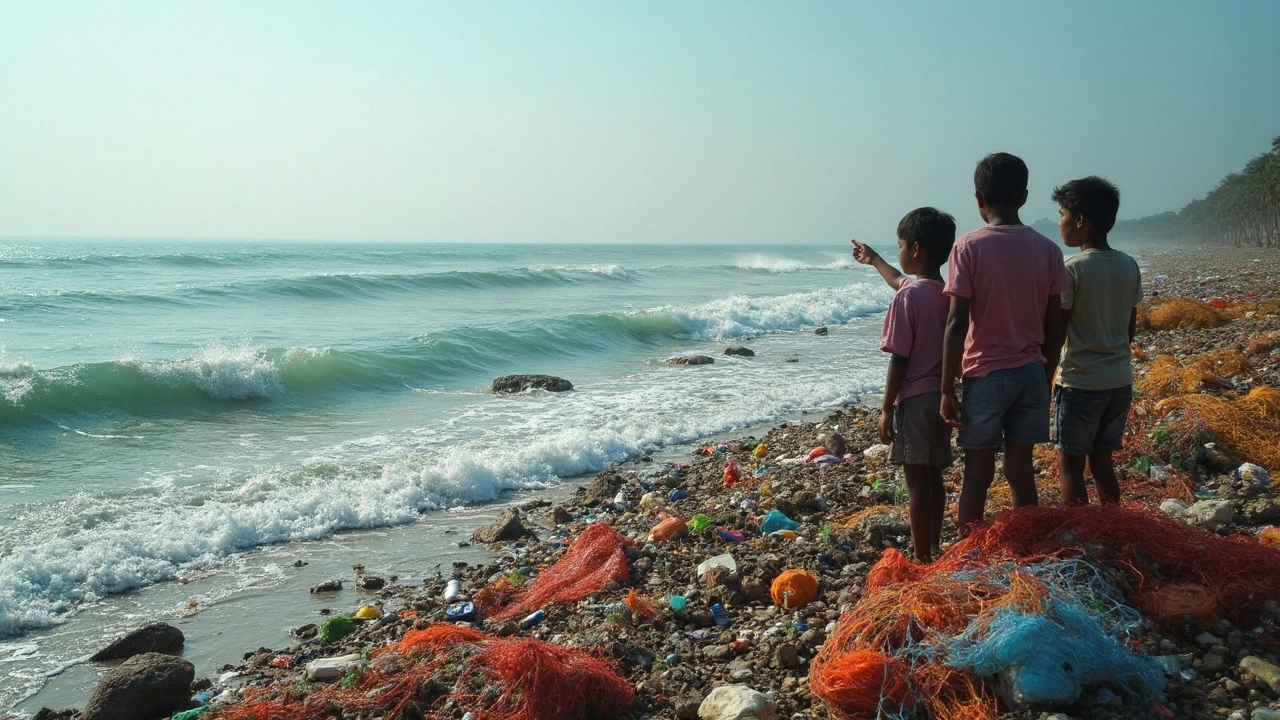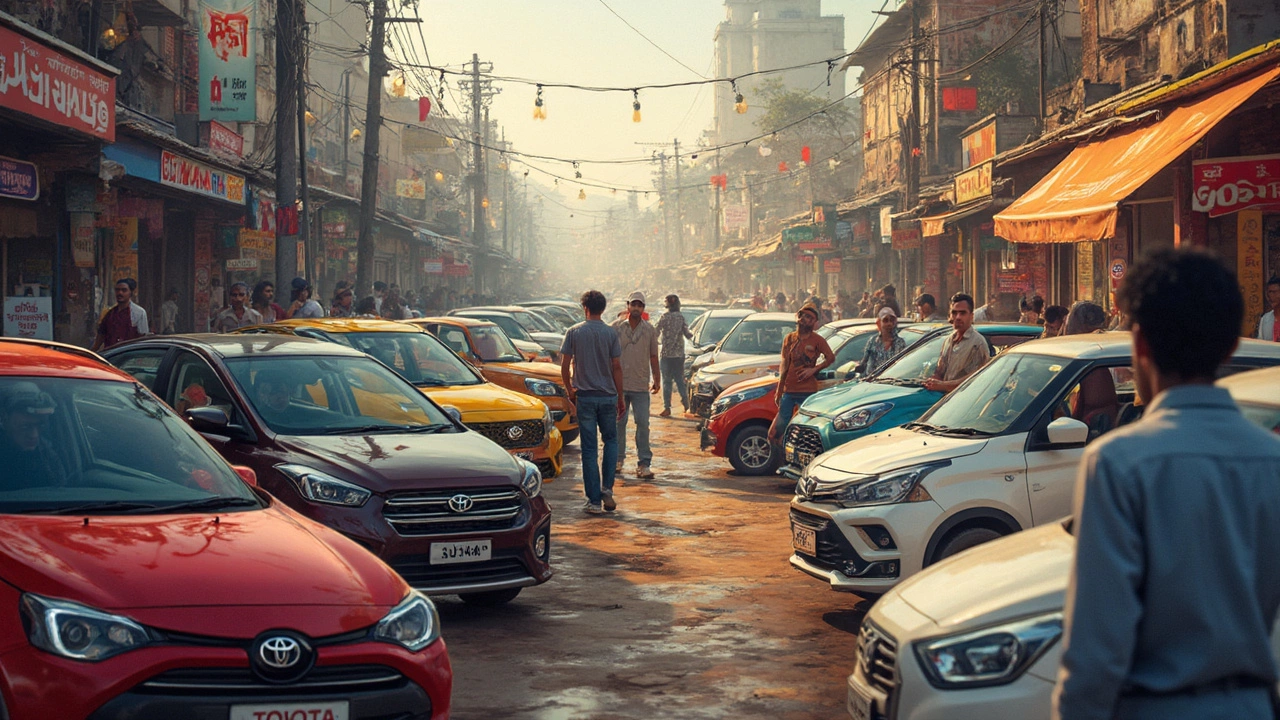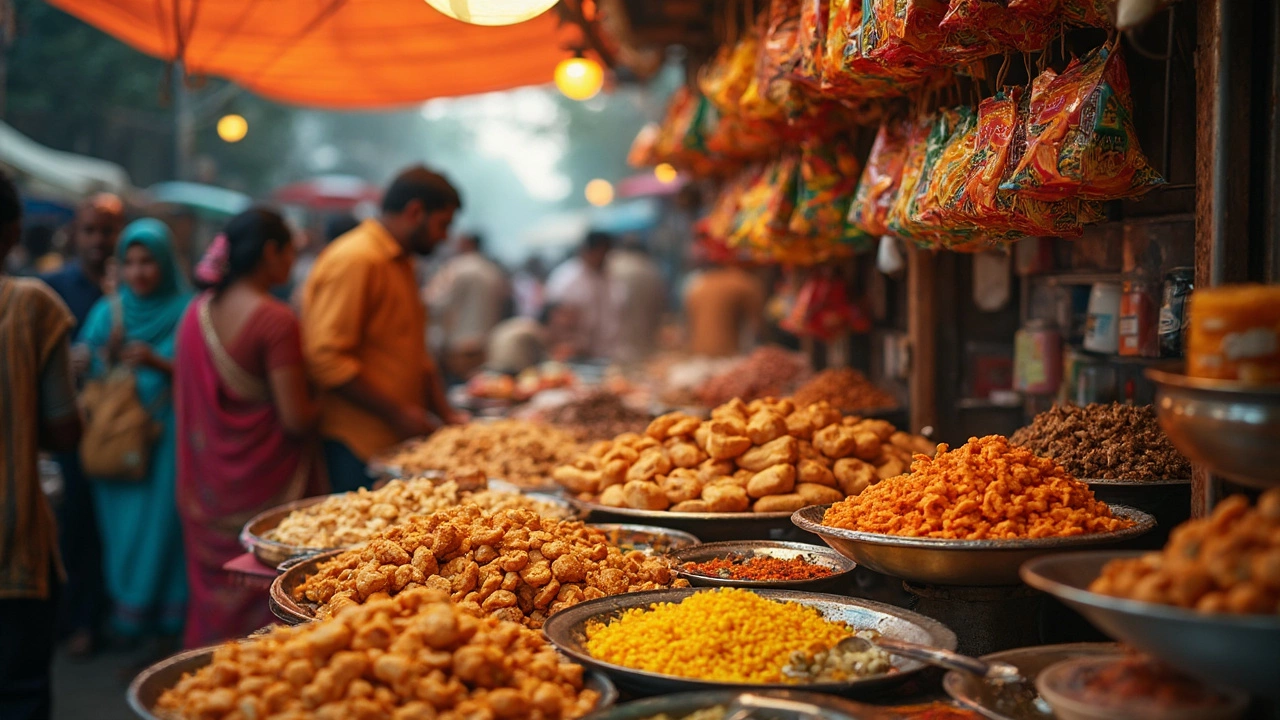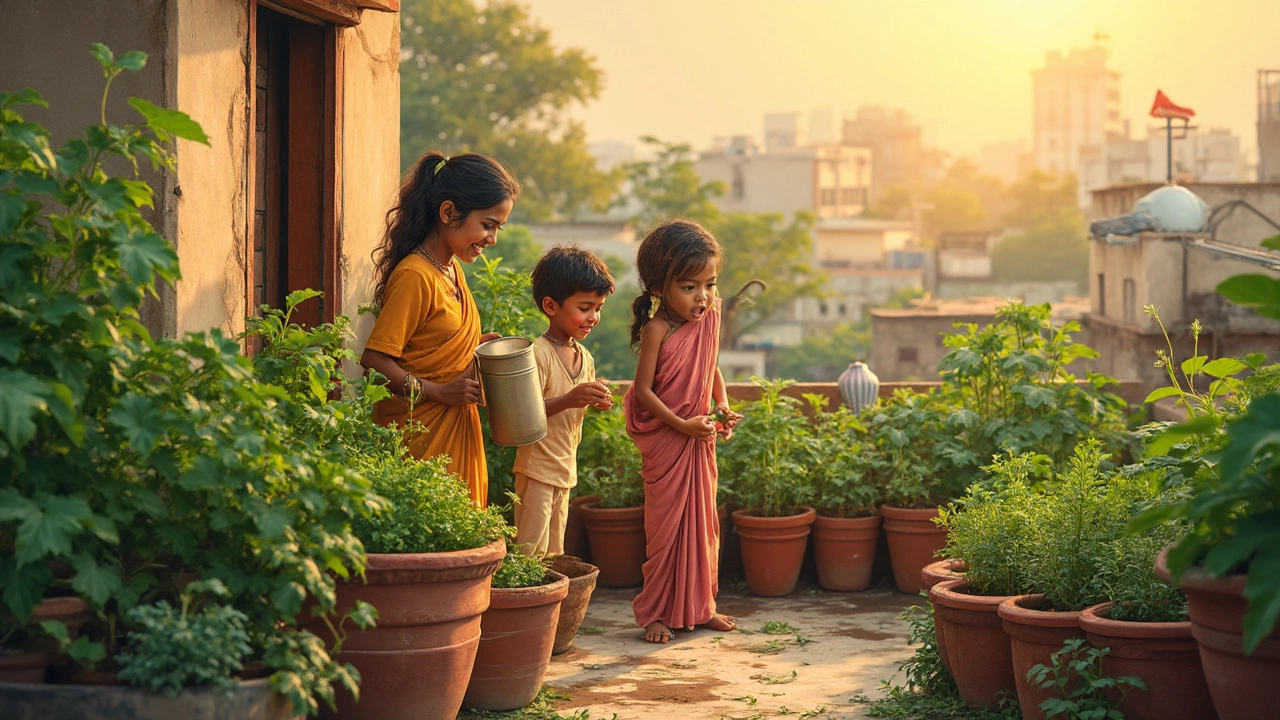Indian States Famous for Fabric: A Deep Dive into Textile Heritage
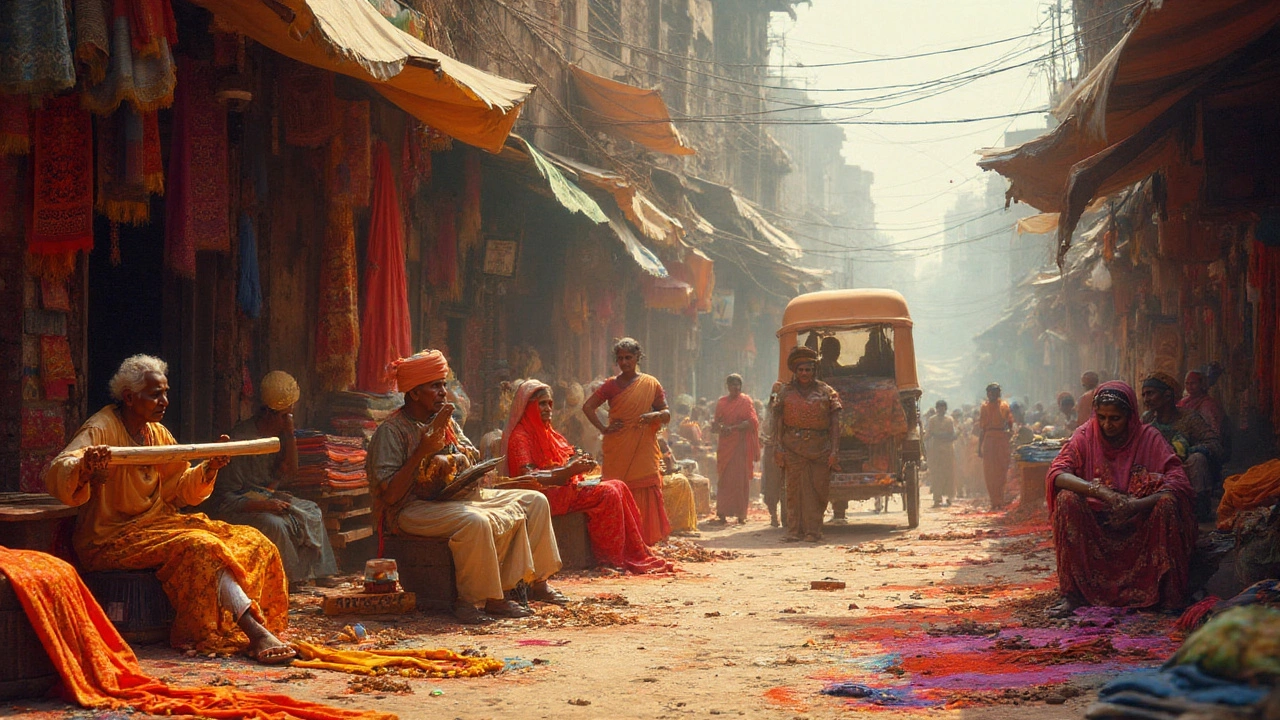
Say the word “fabric” in India, and you open the floodgates to a world that’s as colorful and varied as a Bollywood dance sequence. People in Birmingham see fabric as stuff for making clothes or maybe curtains, but travel a few thousand miles across to India, and fabric becomes history, identity, even protest. Ask my wife, Priya, who’s got at least three Kanjivaram sarees “for special occasions” (she insists on the plural) – each weaves a story that’s deeper than just silk and shine. But which state in India truly stands out for fabric? Is there a single winner? The honest answer: it’s complicated, and that’s what makes this story so darn interesting.
What Makes a State Famous for Fabric?
If you start a conversation in an Indian bazaar about fabric, you’ll hear names fired at you faster than you can google: Gujarat! Tamil Nadu! West Bengal! Punjab! No two people will agree. Here’s why: “fabric” can mean so many things. Are we talking about quantity—who produces the most? Or heritage—who’s got the oldest, most beautiful weaving tradition? Or maybe innovation—where do the wildest designs come from?
India sits right up there among the world’s textile powerhouses. It’s the second-largest producer of textiles and garments, trailing just behind China. The entire sector employs about 45 million people directly and 60 million indirectly. Wild, right? Here’s a cheat-sheet for context:
| State | Iconic Fabric(s) | Famous City/Town | Specialty |
|---|---|---|---|
| Gujarat | Bandhani, Patola, Khadi | Surat, Kutch, Ahmedabad | Tie-dye, Double Ikat, Hand-spun Cotton |
| Tamil Nadu | Kanchipuram Silk, Madras Checks | Kanchipuram, Chennai | Classic Silk Sarees, Yarn-dyed Cotton |
| West Bengal | Baluchari, Tant, Kantha | Murshidabad, Nadia | Intricate Weaves, Embroidery |
| Punjab | Phulkari, Pashmina | Amritsar, Ludhiana | Embroidery, Shawls |
| Uttar Pradesh | Banarasi Silk | Varanasi (Banaras) | Zari Work, Silk Sarees |
| Maharashtra | Paithani, Solapur Chaddar | Paithan, Solapur | Silk Sarees, Cotton Blankets |
States like Gujarat and Tamil Nadu aren’t just “busy”; they’ve been spinning, dyeing, and weaving for centuries. Gujarat, for instance, is home not just to tie-dye Bandhani, but also double Ikat Patola, which is like a Rubik’s cube of weaving. Tamil Nadu’s Kanchipuram silk, meanwhile, is what Indian dreams (and mother-in-laws) are made of. Still, if you ask a Varanasi saree merchant in Uttar Pradesh, he’ll take a solemn oath that his Banarasi silk is the gold standard.
So, why the fierce rivalry? Every region has its “superpower.” Bengal has artistry, Gujarat has vibrancy, Tamil Nadu has immortality in silk, Punjab has stunning embroidery, and UP has silk that could make a queen swoon.
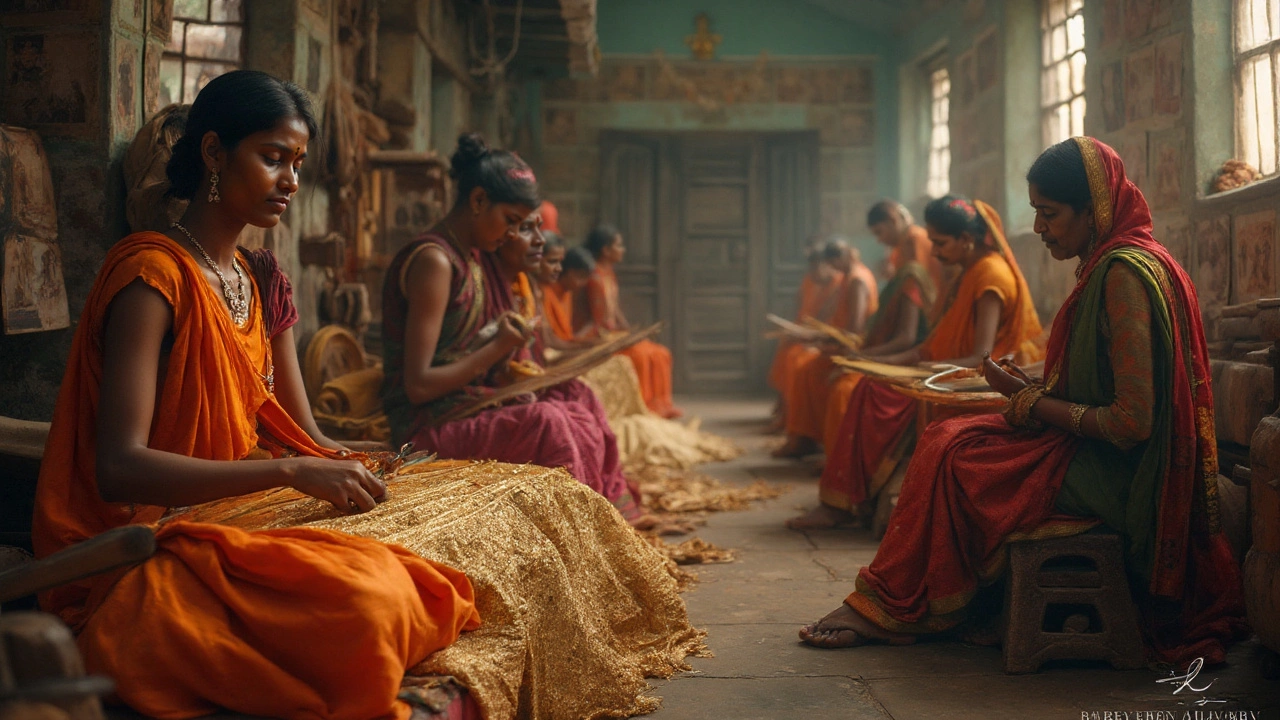
Fabrics That Put States on the World Map
You want fun? Let’s walk through the wildest inventions. Take Gujarat’s Bandhani. The technique is simple in concept: tie little knots in a cloth, dye it, untie, and voila—tiny circles pop up in dazzling patterns. Except, the process is crazy detailed. Walk through a Kutch market, and you’ll see grandmothers tie-dyeing saris with precision and speed, swapping family stories with each twist of their fingers. If you’re up for a challenge, try doing 20,000 knots on a stretch of six-yard fabric. (Nope, I can’t either.)
Tamil Nadu’s Kanchipuram silk sarees are feasts for the eyes. These sarees are handwoven using mulberry silk and feature zari—pure silver that’s dipped in gold. No cheap shortcuts. People even say that a genuine Kanchi saree outlives its owner. Priya’s grandmother had one that was passed down three generations before it ever got a hole. Fascinating trivia: Kanchipuram weavers believe certain sari patterns bring luck, and their favorite motifs—temple tops, peacocks, mangoes—aren’t random. Each one means something old and important.
West Bengal throws its weight behind Baluchari sarees, where entire mythological tales unfold on cloth. Ever seen a saree that narrates the Ramayana scene-by-scene? That’s Bengal for you. Another fun player: Kantha embroidery, which takes old saris and recycles them with running-stitch art. Looks simple; actually, takes skilled hands weeks to finish. Bengal’s “Tant” sarees may sound basic (just cotton), but they breathe in the humidity—life-saving in Kolkata summers.
Punters up north in Uttar Pradesh, especially in Varanasi, offer Banarasi silk. This is the status symbol for Indian weddings—those sarees can cost a bomb, but the craftsmanship is worth every rupee. Fun fact: weaving a classic Banarasi saree can take anything from two weeks to six months! Gold and silver zari work gives each saree a heavy, regal feel.
Punjab and Kashmir come into the spotlight for embroidery and shawls. Phulkari, from Punjab, means “flower work”; the name says it all. Whole stories are told in thread across shawls, dupattas, and even wall hangings. And then there’s pashmina, the softest, warmest wool you’ll ever wrap around you. Local herders in Kashmir still comb goats to get it, and each piece is handwoven. Weird tip: Always buy your pashmina from a government-verified store if you visit—there’s more fake pashmina out there than fake watches at a flea market.
Maharashtra’s Paithani sarees look like rainbows got together and had a meeting about beauty. Pure silk, woven in tiny villages, with bold, popping colors and intricate designs. They even experiment with peacock and lotus motifs—shout-out to traditional but daring design.
If you think this is just about sarees, think again. Men’s wear has a lot to brag about. Think Gujarat’s khadi—the rough, honest, hand-spun fabric that became a weapon in Gandhi’s independence movement. Today, khadi is making a fashion comeback. Leading Indian designers now stamp their brand on khadi jackets and shirts, making something old feel fresh and proud.
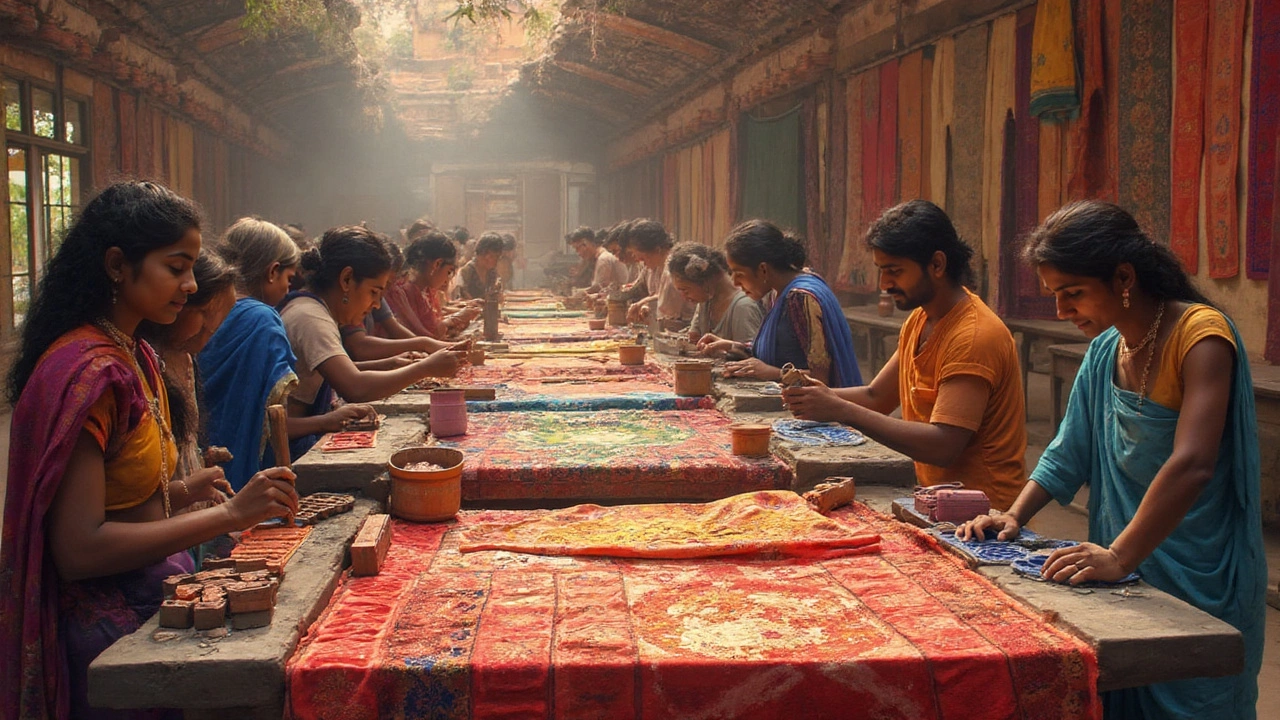
Experiencing Indian Fabrics: Beyond the Bazaar
It’s easy to just list all these fabric stories, but part of the magic is in the experience. If you ever plan a trip, hunt down the weavers, not just the showrooms. In Kanchipuram, hop on a scooter and head to the backstreets—chat with artisans who’ve been weaving silks since before smartphones. In Gujarat, join a Bandhani workshop and try not to botch the dyeing process (I failed spectacularly, but my shirt is still my favorite souvenir). In West Bengal, visit a Kantha cooperative and see how they turn threadbare saris into works of art. You get to see, feel, even smell the fabric—freshly-dyed cloth has a scent you’ll never forget.
There are also crazy festivals centered entirely around cloth. The Surat Textile Expo in Gujarat? Absolutely gigantic—sellers and buyers from around the world. The Kanchipuram Silk Saree Festival? Shopping madness, endless colors, and you’ll probably see local celebrities snapping up sarees. For anyone with a nose for bargains, factory outlets in Coimbatore (Tamil Nadu) or Surat offer amazing prices—just be ready to dig through piles.
Here’s a huge bonus: these crafts aren’t just old—they’re alive, kicking, and evolving. Young designers in Mumbai and Delhi experiment with eco-friendly dyes, recycled threads, and digital printing, even breathing new life into ancient block prints. Fun tip: The “Handloom Mark” or “Silk Mark” labels help you find the real deal. These’re tags that say your fabric is authentically handloom- or silk-made. No more getting ripped off by some chancer with a shiny, synthetic knock-off.
If you’re stuck in the UK like me, good news—Indian fabric’s gone global. I’ve bought Kanchipuram ties in London, Banarasi jackets in Birmingham, and once stumbled into a Diwali fair in Manchester where Gujarati ladies out-sareed each other in swirls of tie-dye. Online, a lot of Indian co-ops ship worldwide and share “meet the artisan” videos—worth checking out if you want a personal link to the weaving process.
Tips for anyone chasing authentic Indian fabric: Ask about the weaver, not just the price tag. Real artisans take pride in their craft, and you’ll spot the difference. Turn the saree or scarf over—authentic weave looks neat on both sides. Rub the cloth between your fingers—a real silk or pashmina feels cool to the touch. If they make big promises (“this will last 100 years!”) but the fabric feels thin or plasticky, they’re bluffing. Above all, choose stuff that makes you smile—India’s fabric scene has something for everyone, whether you want wild colors, royal gold, or simple hand-spun cotton that just breathes right.
To sum it up, there’s no single champion state. Instead, it’s a never-ending festival, with each state proudly spinning its own legend. Whichever you pick—be it Tamil Nadu’s silks, Gujarat’s tie-dyes, UP’s regal Banarasi, Bengal’s artistry, or Punjab’s vibrant embroidery—you’re signing up for centuries of tradition, color, and innovation. Next time you spot a sari or a shawl with a strange name, don’t just wonder where it’s from—know that it’s carrying a slice of India’s heart with every thread.


